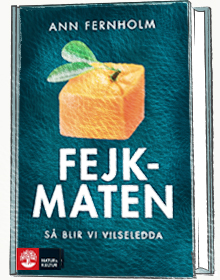Socker står högt upp på New York Times agenda. Nu har de återigen en artikel om hur sockerindustrins pengar påverkar forskningen: Studies Linked to Soda Industry Mask Health Risks.
Här är storyn: När San Francisco beslutade att all reklam för läsk skulle ha en varningstext på sig stämde sockerindustrin staden. Med anledning av det gav staden forskaren Dean Schillinger vid UCSF i uppdrag att utvärdera de studier som har gjorts på kopplingarna mellan läsk och olika hälsoproblem. Under arbetets gång fick han en känsla av att oberoende studier och studier som hade finansierats av sockerindustrin ofta landade i helt olika resultat.
Oberoende forskning ger andra resultat än sponsrad forskning
Nu har Dean Schillinger gjort en mer strukturerad kartläggning av 60 studier på området. RESULTAT: I studier ledda av en oberoende forskare syntes en tydlig koppling mellan läskkonsumtion, fetma och metabolt syndrom. Av de 26 studier där det saknades en koppling mellan läsk och olika hälsoproblem hade ALLA sponsrats av industrin.
Tillägg: Läskindustrin menar att denna rapport i sig är vinklad eftersom Dean Schillinger var betald av San Franciscos stad. Man ska även snart rösta om en läskskatt i Kalifornien och läskindustrins sista kommentar i artikeln lyder: “This paper is the latest in a trend of pro-tax forces writing speculative opinion papers to influence voters a week before a vote on several ballot initiatives to tax beverages,” the association said. “Clearly pro-tax forces are worried that the voters are skeptical of their demands for regressive and discriminatory taxes.”
Vill du läsa fler liknande inlägg? Titta i kategorin Om socker, Lobbying & industrin. Stötta mitt arbete via Patreon.







Ralf ∙ 2 november, 2016 kl. 09:22
Så här fungerar branschen:
One of the other executives I (Michael Moss) spoke with at length was Jeffrey Dunn, who, in 2001, at age 44, was directing more than half of Coca-Cola’s $20 billion in annual sales as president and chief operating officer in both North and South America.
In an effort to control as much market share as possible, Coke extended its aggressive marketing to especially poor or vulnerable areas of the U.S., like New Orleans — where people were drinking twice as much Coke as the national average — or Rome, Ga., where the per capita intake was nearly three Cokes a day. In Coke’s headquarters in Atlanta, the biggest consumers were referred to as “heavy users.” “The other model we use was called ‘drinks and drinkers,’ ” Dunn said. “How many drinkers do I have?
And how many drinks do they drink? If you lost one of those heavy users, if
somebody just decided to stop drinking Coke, how many drinkers would you have to get, at low velocity, to make up for that heavy user? The answer is a lot. It’s more efficient to get my existing users to drink more.”
One of Dunn’s lieutenants, Todd Putman, who worked at Coca-Cola from 1997 to 2001, said the goal became much larger than merely beating the rival brands; Coca-Cola strove to outsell every other thing people drank, including milk and water. The marketing division’s efforts boiled down to one question, Putman said: “How can we drive more ounces into more bodies more often?” (In response to Putman’s remarks, Coke said its goals have changed
and that it now focuses on providing consumers with more low- or no-calorie
products.)
In his capacity, Dunn was making frequent trips to Brazil, where the company had recently begun a push to increase consumption of Coke among the many Brazilians living in favelas. The company’s strategy was to repackage Coke into smaller, more affordable 6.7-ounce bottles, just 20 cents each. Coke was not alone in seeing Brazil as a potential boon; Nestlé began deploying battalions of women to travel poor neighborhoods, hawking American-style processed foods door to door. But Coke was Dunn’s concern, and on one trip, as he walked through one of the impoverished areas, he had an epiphany.
“A voice in my head says, ‘These people need a lot of things, but they don’t need a Coke.’ I almost threw up.”
Dunn returned to Atlanta, determined to make some changes. He didn’t want to abandon the soda business, but he did want to try to steer the company into a more healthful mode, and one of the things he pushed for was to stop marketing Coke in public schools. The independent companies that bottled Coke viewed his plans as reactionary.
A director of one bottler wrote a letter to Coke’s chief executive and board asking for Dunn’s head. “He said what I had done was the worst thing he had seen in 50 years in the business,” Dunn said. “Just to placate these crazy leftist school districts who were trying to keep people from having their Coke. He said I was an embarrassment to the company, and I should be fired.” In February 2004, he was.
≪ | ≫ |